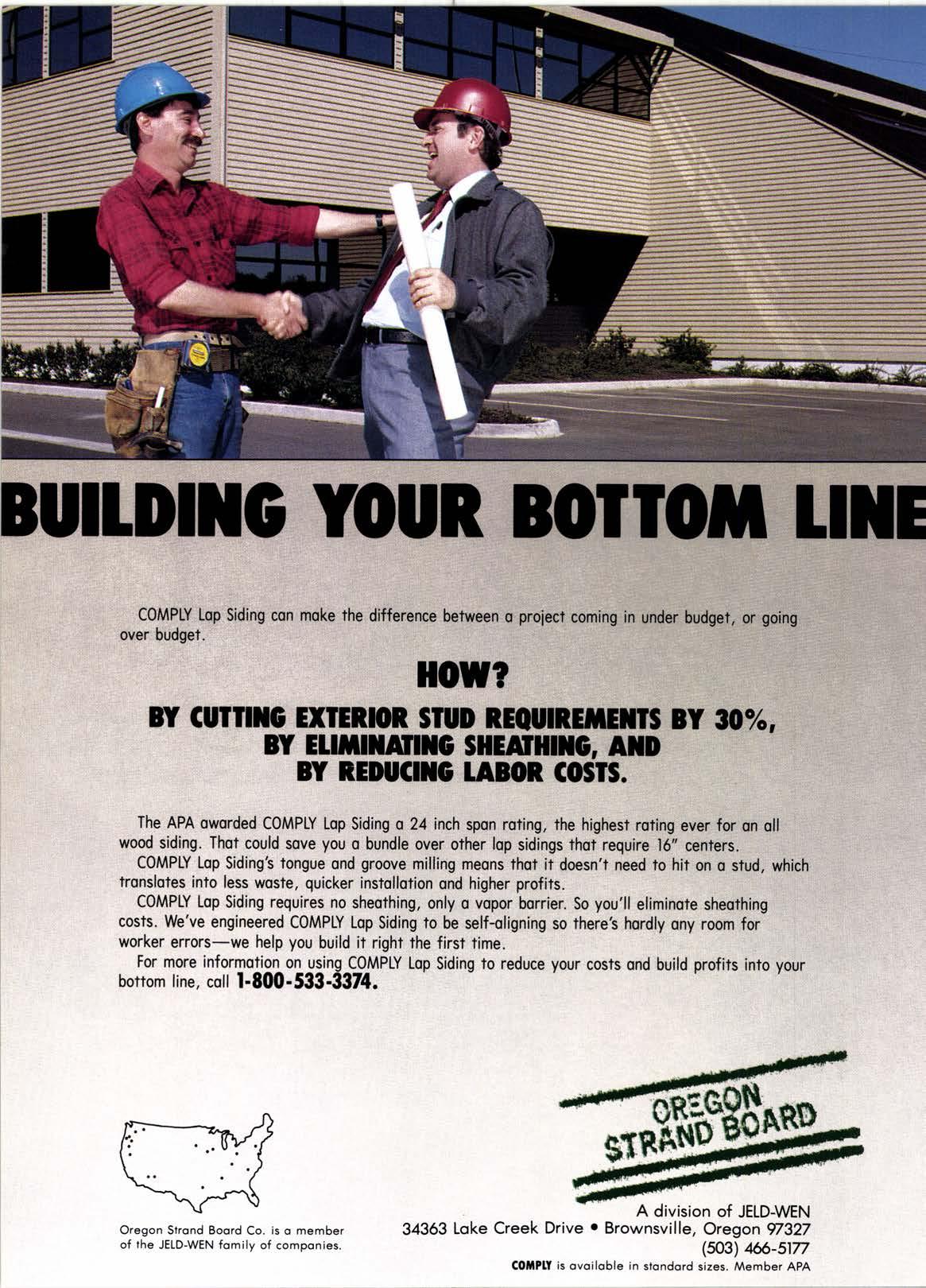
2 minute read
BUILDI]IG YOUR BOITOH 1ITIE
COMPLY Lop Siding con moke the difference between o project coming in under budget, or going over budget.
HOW?
BY CUilITO EXIERIOR STUD REOUIRETEXIS BY IO%, BV ETITITAIITG SIIEAIHITO, ATD BY REDUCI]IO 1ABOR COSTS.
The APA oworded COMPLY Lop Siding o24 inch spon roting, the highest roting ever for on oll wood siding. Thot could sove you o bundle over other lop sidings thot require l6" centers.
COMPLY Lop Siding's tongue ond groove milling meons fhot it doesn't need to hit on o stud, which tronslotes into less woste, quicker instollotion ond higher profits.
COMPLY Lop Siding requires no sheothing, only o vopor borrier. So you'll eliminote sheothing costs. We've engineered COMPLY Lop Siding to be self-oligning so there's hordly ony room for worker errors-we help you build it right the first time.
For more informotion on -using-C_OrVIPLY Lop Siding to reduce your costs ond build profits inro your bottom line, coit l-800-533-3374.
OST do-it-yourselfers rely on magazines for their home project ideas and have at least some carpentry experience. In addition, 840/o of those responding to a project information offer are serious about completing a project.
A mail-in survey taken by the Western Wood Products Association polled a sample of consumers who had ordered outdoor project literature from March to May 1988. Some 122 d-i-yers responded.
When asked to indicate one or more sources of project ideas, about 750/o of the respondents said they relied on magazines. How-to books were a distant second with 46%: newspapers and lumber retailers ranked third and fourth, with 270/o and l'l o/o respectively.
Such figures show that dealers have an opportunity to be a better information source as well as a materials source. "lf the dealer puts idea literature into racks for consumers," said Ed Thomas, WWPA's director of products promotion, "he can stimulate added sales."
Skill levels also showed a distinct trend. Two out ofthree respondents indicated they had some carpentry experience at least; the remainder considered themselves experienced and inexperienced weekend carpenters.
Overall, the d-i-yers spent from $600 to $1,800 for deck building materials and $30 to $600 for deck accessories such as benches and steps. In addition, they spent from $10 to $200 for wood planter boxes made from dimension lumber.
In general, a greater percentage of the respondents bought paints or finishes than either tools or sandpaper. However, tools ranked higher for those who worked on decks than for those who worked on planters or deck accessories.
The survey revealed a slight preference for building materials sources. Slightly more than half of the do-it-yourselfers went to a lumberyard for their materials, while 4lolo went to home centers.
When asked to list other projects they would like to have plans for, the respondents displayed a variety of interests. Seventy-four people wrote some form of individual response.
Of those 74, 20 indicated they would like more outdoor projects, ranging from deck plans to children's playground sets. Another 23 showed










